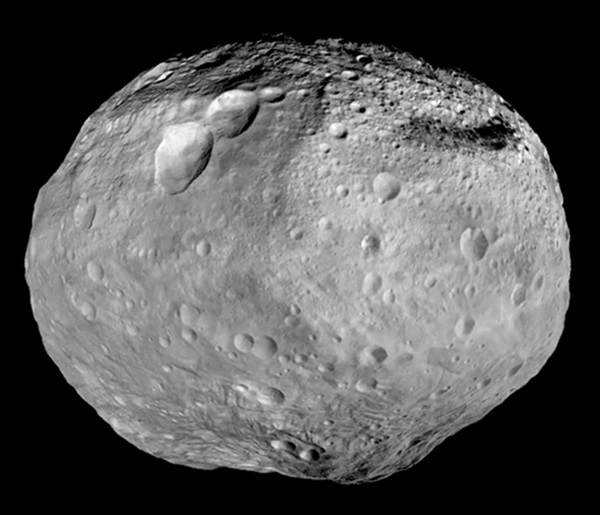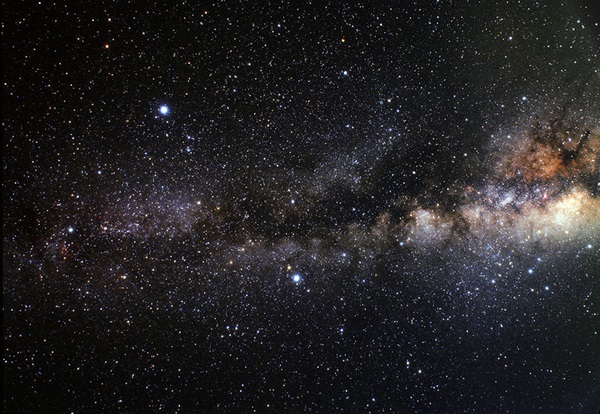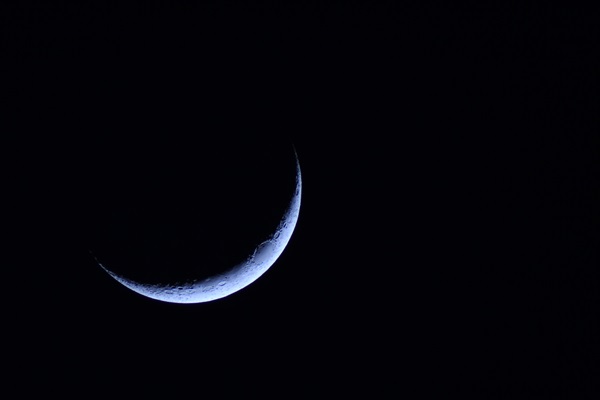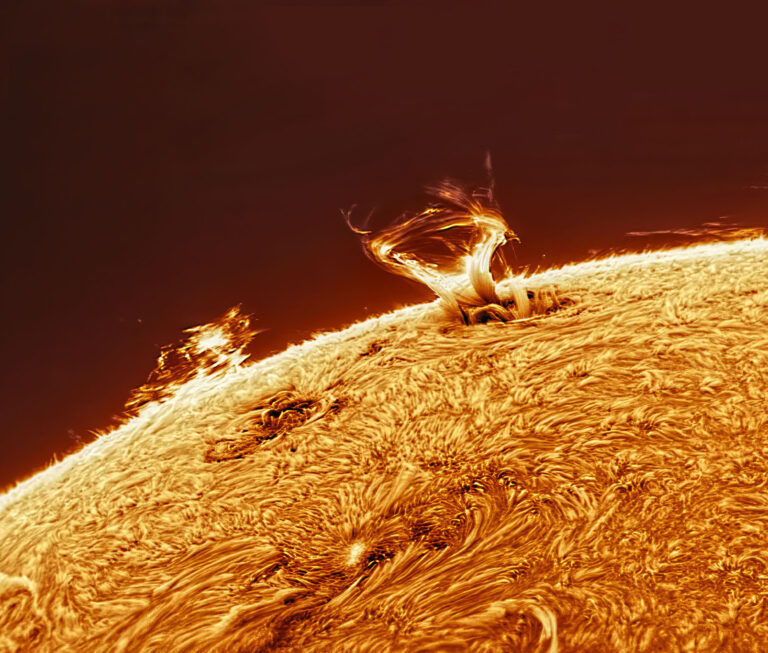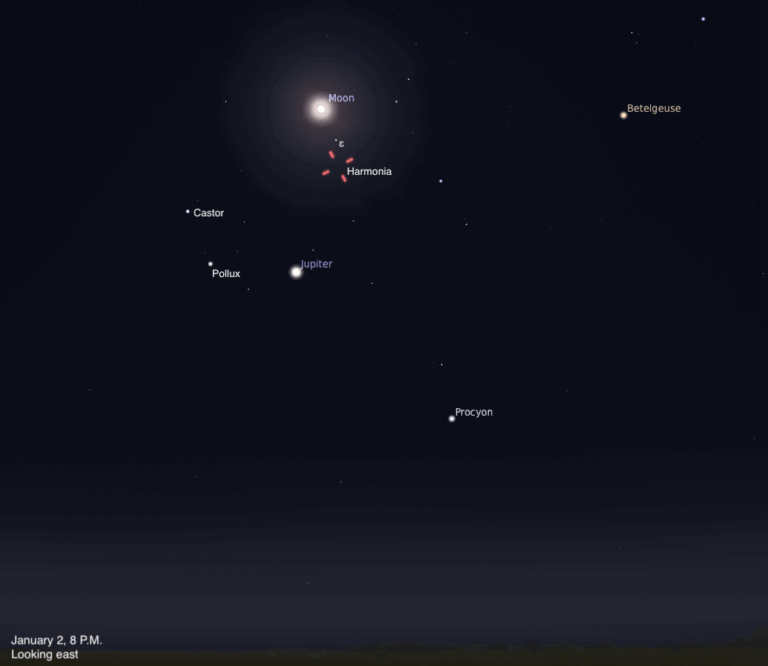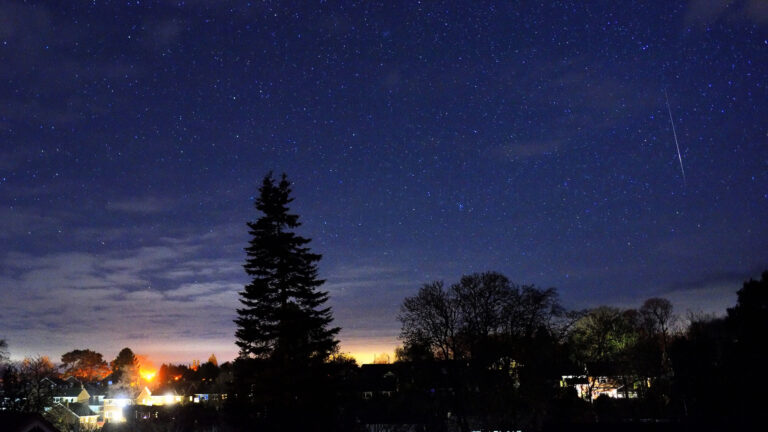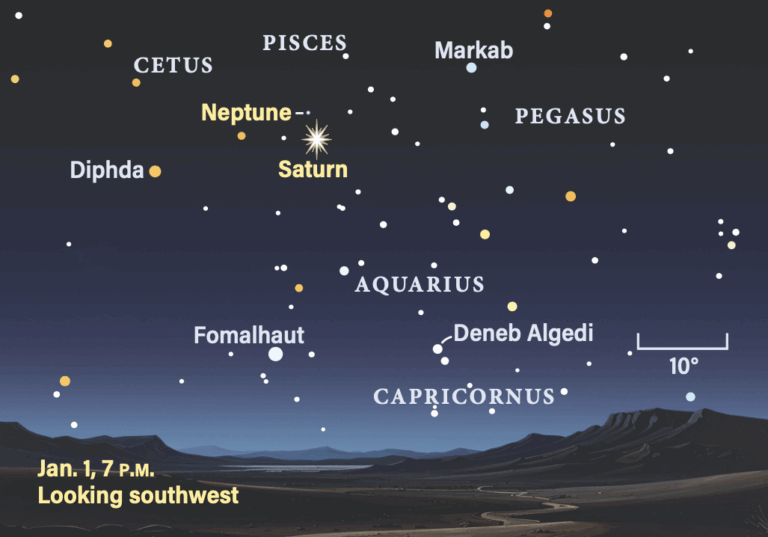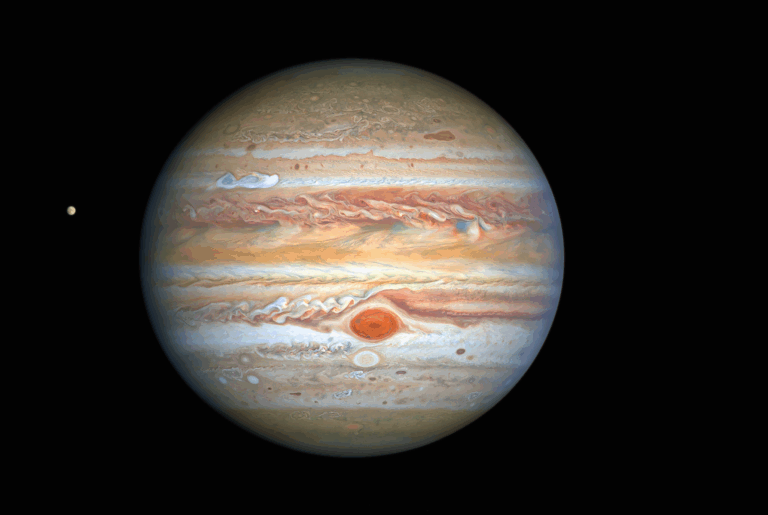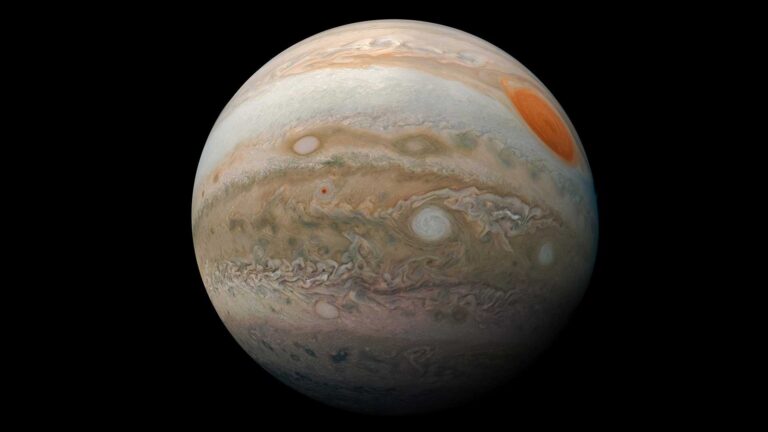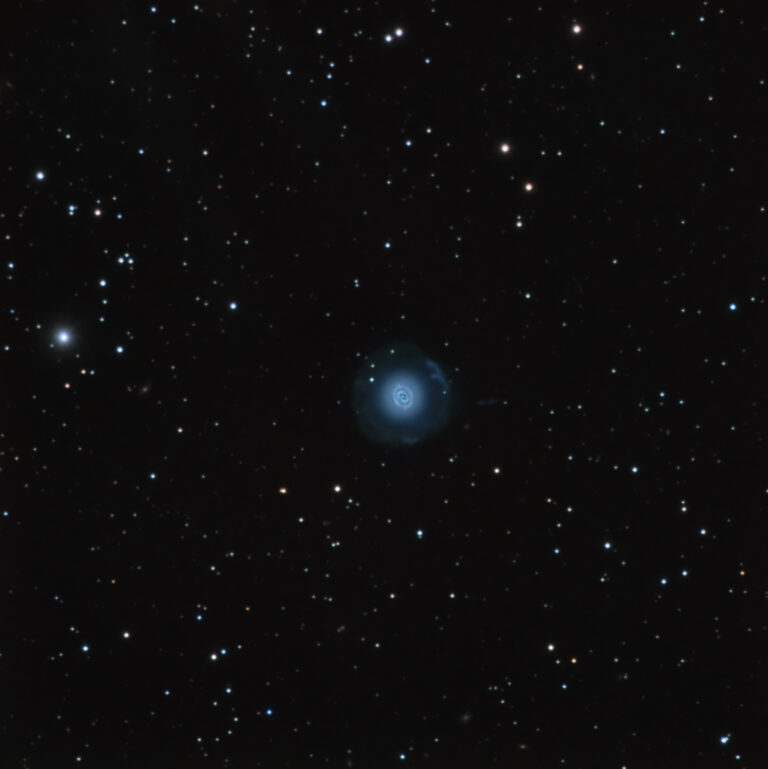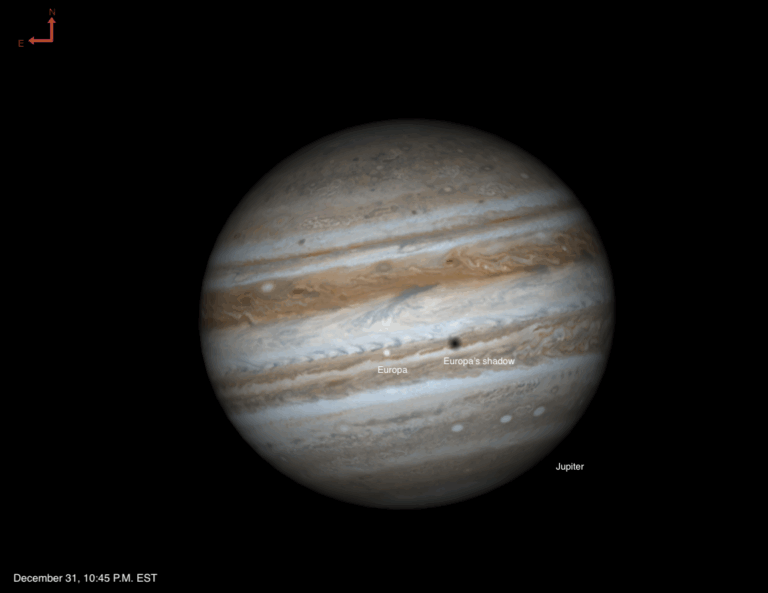Key Takeaways:
Friday, May 19
Jupiter appears halfway to the zenith in the southern sky after darkness falls this week and doesn’t set until morning twilight starts to paint the sky. The brilliant planet shines at magnitude –2.3 among the background stars of Virgo, some 10° northwest of the Maiden’s brightest star, 1st-magnitude Spica. When viewed through a telescope, Jupiter’s disk spans 42″ and shows plenty of atmospheric detail.
Saturday, May 20
Mars’ days as an evening object are dwindling to a precious few. The Red Planet appears 10° high in the west-northwest 45 minutes after sunset and dips below the horizon shortly before 10 p.m. local daylight time. The magnitude 1.7 planet lies among the background stars of Taurus the Bull. Unfortunately, a telescope shows no detail on the ruddy world’s 4″-diameter disk.
Sunday, May 21
The sky’s brightest asteroid should be relatively easy to find through binoculars or a telescope these next few evenings. Eighth-magnitude Vesta resides in the constellation Cancer the Crab just 3° north of the spectacular Beehive star cluster (M44). To confirm a sighting, sketch four or five stars in the field of view and then return to the same field a night or two later. Vesta will be the “star” that moved. And while you’re in the area, be sure to enjoy a view of the Beehive. Under a dark sky, you should be able to spot the cluster as a faint and fuzzy cloud with your naked eye. But M44 explodes into dozens of stars through binoculars or a small telescope at low power.
Monday, May 22
Dazzling Venus lights up the eastern sky from the time it rises shortly before 4 a.m. local daylight time until close to sunrise nearly two hours later. But this morning, it shares the sky with a crescent Moon. The pair stands 10° above the horizon an hour before the Sun comes up and looks stunning against the twilight background. Venus shines at magnitude –4.6 and easily ranks as the night sky’s brightest light after the Moon. If you view the planet through a telescope this morning, it spans 28″ and appears a bit more than 40 percent lit.
Tuesday, May 23
The waning crescent Moon dips lower in the predawn sky this morning, where it helps point the way to Mercury. The innermost planet lies 9° to Luna’s lower left and just 5° above the horizon 30 minutes before sunrise. Fortunately, Mercury shines brightly at magnitude 0.1 and should stand out through binoculars. A telescope reveals the planet’s 7″-diameter disk, which appears halflit.
Wednesday, May 24
The Summer Triangle asterism dominates the eastern sky in late evening. Vega, the triangle’s brightest member, shines at magnitude 0.0 and stands highest of the three stars. To its lower left lies Deneb; at magnitude 1.3, it’s the faintest of the trio. Magnitude 0.8 Altair completes the bright asterism. Despite its name, the Summer Triangle appears prominent from late spring until the onset of winter.
Thursday, May 25
New Moon occurs at 3:44 p.m. EDT. At its New phase, the Moon crosses the sky with the Sun and so remains hidden by our star. Because the Moon reaches perigee, the closest point in its orbit around Earth, only six hours later (at 9:21 p.m. EDT), residents in coastal areas can expect higher than normal tides for the next few days. At perigee, the center of the Moon lies 221,958 miles (357,207 kilometers) from Earth’s center.
Friday, May 26
Although the Moon passed nearly between the Sun and Earth yesterday, it reappears as a slender crescent in this evening’s sky. Scan just above the west-northwestern horizon with binoculars about a half-hour after sunset, when the Moon stands 5° (less than a typical binocular field) high. You also should see Mars some 5° to Luna’s upper right.
Saturday, May 27
Saturn offers a visual treat all week. The ringed planet rises before 10 p.m. local daylight time and climbs some 30° above the southern horizon by 2 a.m. Shining at magnitude 0.1, Saturn is easily the brightest object in the constellation Ophiuchus. When viewed through a telescope this week, the gas giant world shows an 18″-diameter disk surrounded by a spectacular ring system that spans 41″ and tilts 27° to our line of sight.
Sunday, May 28
Look high in the northwest after darkness falls this week and you’ll be greeted by the familiar sight of the Big Dipper. The Dipper is the sky’s most conspicuous asterism — a recognizable pattern of stars that doesn’t form a complete constellation shape. It makes up the body and tail of Ursa Major the Great Bear. Use the Pointers, the two stars at the end of the Dipper’s bowl, to find Polaris, which lies due north for everyone north of the equator. Polaris marks the end of the Little Dipper’s handle. On evenings in late May, the relatively faint stars of this dipper arc directly above Polaris.

